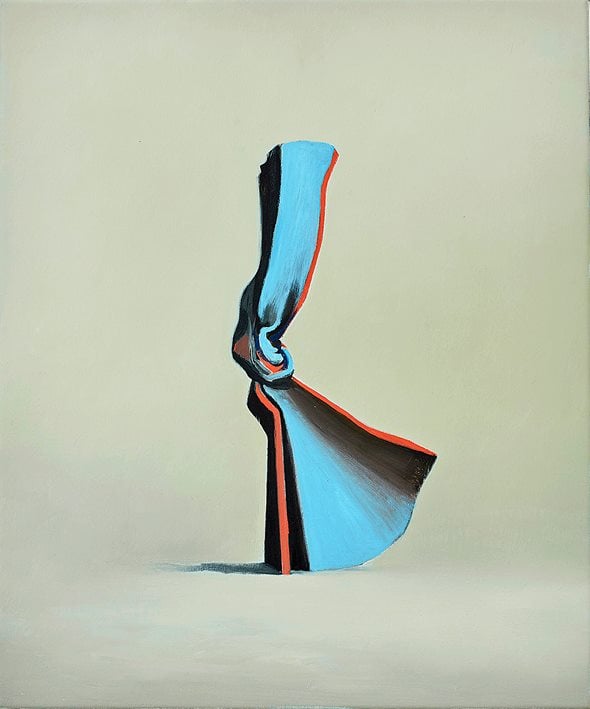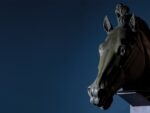A conversation about ceramics

Mostra di Lucio Fontana | Caroline Achaintre | Ivan Seal. A conversation about ceramics.
Comunicato stampa
The exhibition triggers a dialogue between ceramics by Lucio Fontana and the works by two contemporary artists, who with different media show how this ancient material has become a surprising vehicle for new experimentation.
According to the Bible, God used clay to create Man in his image and likeness. In Jewish mythology, Man in turn shaped the Golem, to whom he managed to give the breath of life, but not a character of his own, since he lived only to follow the orders of his maker: a powerful metaphor for the possibilities of this primordial substance.
Clay and then terracotta, composed by the primal elements earth, water and fire, and easily shaped, is, in this sense, the most ancient art material in history. It was used since prehistoric times in every corner of the planet: traces of Japanese pottery date back to at least one millennium before the Christian era; the Greeks produced and spread it intensely from the 6th century BC, and before them the Assyro-Babylonians, the ancient Egyptians, the Etruscans. Often used in the field of applied and decorative arts, it became porcelain in China already in the 8th century AD, and then in Europe after the alchemical studies only in the 17th century. Porcelain was used to create vases and all kinds of small collectible figurines, becoming a kind of mirror of the world of the Baroque era.
In the 20th century Lucio Fontana (1899 Rosario, Argentina 1968 Comabbio) made clay into something completely new: he created figures in which the marks of his fingers remain visible. The results are shapes where the contours seem to be in perpetual motion. Starting in the 1930s, he gave new life to ceramics in a creative vortex that pushed the material beyond figuration, achieving what critics would hail as an important harbinger of the informal approach of the years to follow. The forms are joined by the luminous, iridescent colors of the rich glazes and metallic highlights that induced commentators to talk about sculptures that incorporate painting.
The works in the exhibition follow a chronological line that illustrates how the Baroque period by Fontana was a prelude to the spatialist spirit that informed his works in the 1950s: a path that from the Winged Victory from 1937 leads to a Spatial Concept in ceramic dated 1963.
Caroline Achaintre (*1969 Toulouse, lives in London) creates ceramics, tapestries and drawings hovering between abstraction and figuration, the anthropomorphic and the totemic. An oval form with two holes evokes a mask or a face with a specific character. Her ceramics are often composed of thin, apparently soft and supple layers, with shiny and at times etched surfaces abstract, but suggesting characters, limbs or other parts of the body. Sensitive to the imagery and formal languages of the post-modern contemporary society, Achaintres works mix modernist taste with the primitive, the exotic with artisanal practice, fetishism with folk traditions, the carnivalesque with symbolic ritual. The objects, combined in a disorienting and complex layering of references, stimuli and languages, create an unusual dialectic between identity and otherness.
In the paintings by Ivan Seal (*1973 Stockport UK, lives in Berlin) the pictorial matter condenses into forms that look abstract at first glance, but also seem to have a three dimensional presence in space, from which ceramic or porcelain shapes and figures seem to emerge. It is as if the entire representation of the world could pass through this other artistic form. His painting creates ceramics almost spontaneously, taken from the memories and imagination of the artist, as in the playful and aleatory practice of musical improvisation. In certain paintings the brushstrokes generate an extraordinary sense of movement, while in others they create a sculptural effect, offering glimpses of luminous reflections in the vitreous glaze of the porcelain.
IMAGES: Lucio Fontana, Vittoria Alata, 1937, colored and glazed ceramic, cm 27,5 x 20,5 x 12 / Caroline Achaintre, Sinus, 2015, ceramic, cm 40 x 42 x 5 / Ivan Seal, beaten hesitates around the beater, 2016, oil on canvas, cm 60 x 50



